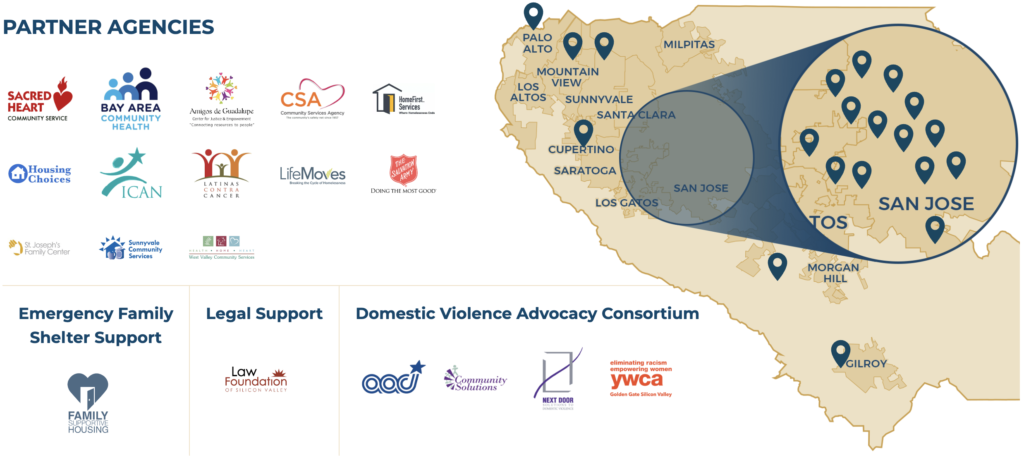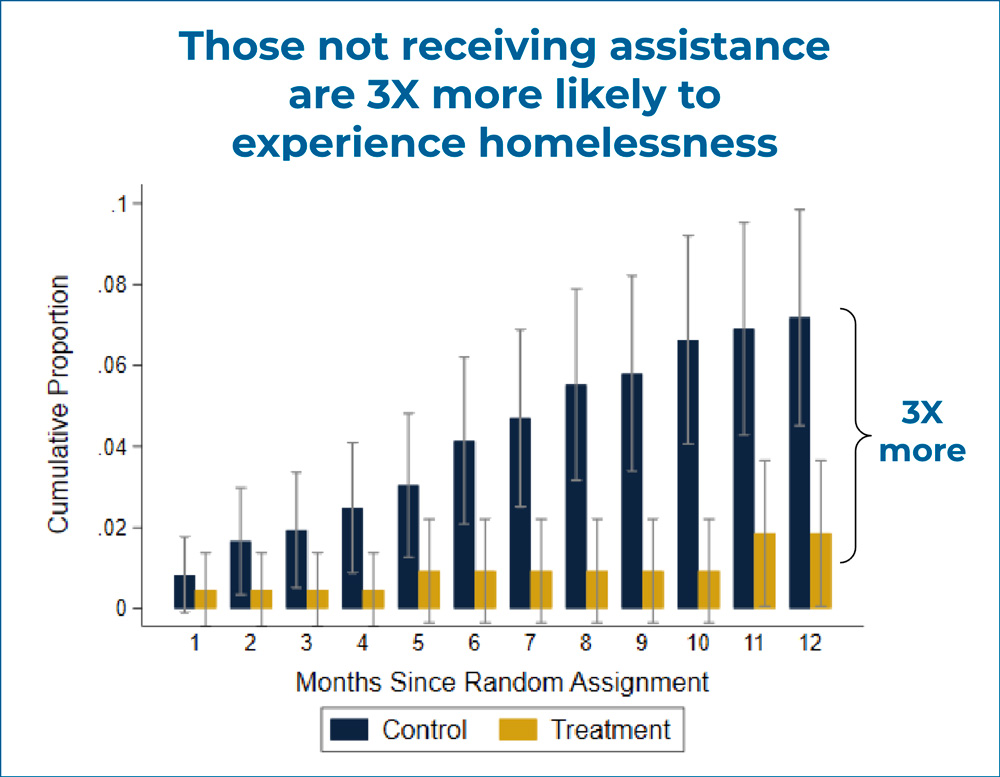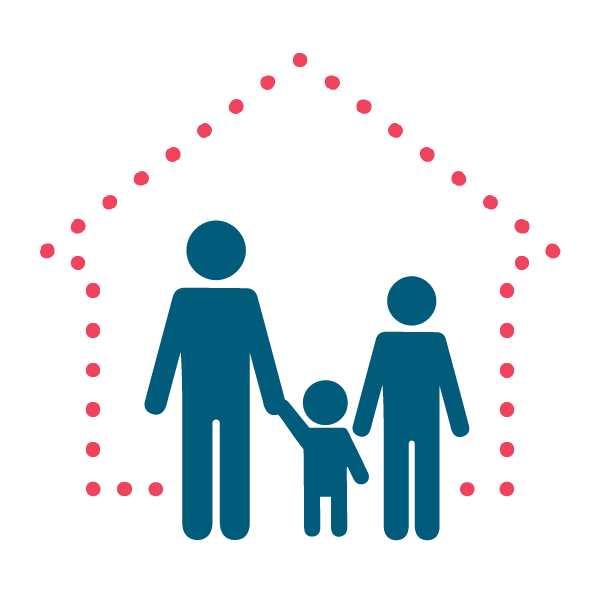Launching a New Homelessness Prevention System
In 2017, for every homeless individual connected to housing, two to three new people were being pushed into homelessness for the very first time. So, even as the coalition focused on helping move people from the streets into homes, it knew that it also had to take steps to prevent homelessness in the first place. And over the course of its journey, the coalition has brought together a broad group of stakeholders to pilot new homelessness prevention strategies and integrate successful efforts into the broader system of care.
Bringing Partners Together into a Unified Approach

In Santa Clara County, homelessness prevention services had historically been modest and administered in a disconnected way, with various community organizations providing services in different localities. Most programs subsided on small pots of funding, which resulted in assistance being provided unevenly (often based on zip code rather than need), in very limited situations and typically on a one-time basis only. In addition, most programs did not track whether they were effective in preventing homelessness or further housing instability.
So, the coalition, led by Destination: Home, decided to create a unified, countywide Homelessness Prevention System that would provide temporary financial assistance, legal support, and case management to low-income households at imminent risk of becoming homeless.
To create the new and improved system, Destination: Home partners convened service providers to listen to their concerns, needs, and challenges – starting with the existing Emergency Assistance Network (EAN), which would ultimately form the foundation of this new effort. At first, there was hesitancy about shifting from the historic, jurisdiction-based funding to a pooled approach where dollars could be deployed more flexibly based on need. However, Destination: Home and the EAN partners used these conversations to establish shared value statements, co-create implementation timelines that built in trial periods to allow for acclimation to new approaches and develop funding incentives that could pay for additional staff and operations capacity. Overall, this collaborative approach generated buy-in for the new system, which was buoyed by new funding from more than a dozen different government, corporate, and philanthropic partners – including early seed funding from the County of Santa Clara and City of San Jose, who over time, have become the largest funders of the system.
Santa Clara County Homelessness Prevention System
In 2017, Destination: Home partnered with a network of non-profit providers – with Sacred Heart Community Service as the lead – to launch the Santa Clara County Homelessness Prevention System. Providers conduct a standardized screening process to analyze a household’s risk for homelessness and assign a case manager who can help the household access public benefits, legal support, temporary financial assistance, and other support services from across the system. Providers also offer temporary financial assistance to help households stabilize their financial situation and stay housed – and importantly, there are no hard caps on the amount of financial assistance that can be offered.
Originally conceived as a 2-year pilot program, the Santa Clara County Homelessness Prevention System has since grown to include a diverse group of 19 non-profits and now serves close to 2,000 families every year. The system also played a major role in the community’s successful pandemic-era rental and financial assistance effort.

The Homelessness Prevention System has proven highly successful. Nearly 20,000 people at risk of homelessness have received support, with 95% of families remaining stably housed while receiving services. The program has also proven cost-effective as well, with the average household only requiring about $6,000 in direct financial assistance.

These outcomes have been confirmed by independent research as well. Results from a recent randomized controlled trial (the first ever conducted on a homelessness prevention program) carried out by the Wilson Sheehan Lab for Economic Opportunities at Notre Dame University revealed that individuals and families who received assistance through the system experienced an 81% reduction in the likelihood of experiencing homelessness within six months of enrolling and a 73% reduction within a year of enrolling. The study also suggests benefits to the broader community exceed the costs of the program, with $2.47 in benefits gained for every dollar spent on emergency financial assistance.
As a result of these impressive results, and the efforts to create a unified community-wise approach, homelessness prevention has become enshrined as a key part of the community’s strategy for addressing homelessness.





